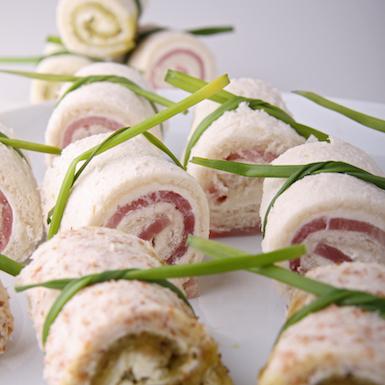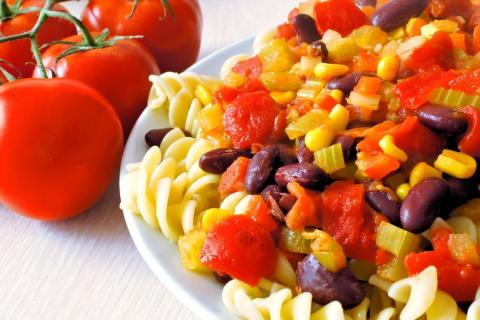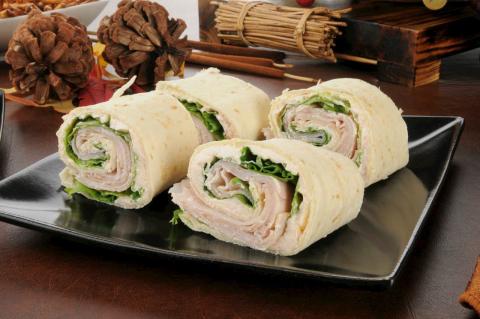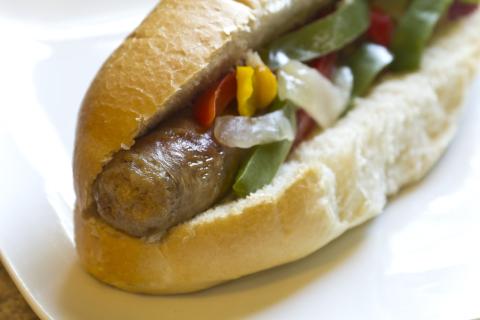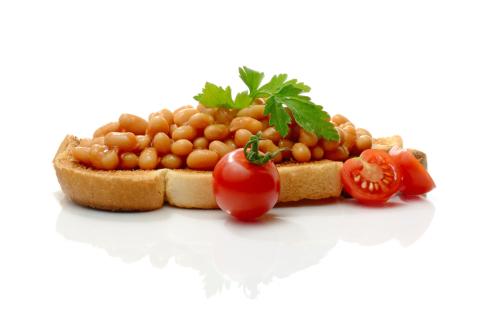- 4 (400g) Salmon Fillets
- 8 Spears (360g) Broccoli
- 1 Pack (250g) Dried Egg Noodles
- 5 Teaspoons (25g) Soy Sauce
Ingredients
Allergy Disclaimer
Always check the label of each ingredient for allergy warnings.
Method
- Place the salmon fillets skin side up on the base of the grill pan. Cook under a medium grill for 20 minutes, turning once halfway through. Make sure to use different utensils for raw and cooked fish.
- Rinse the broccoli and cut into small pieces. Cook in a pan of boiling water for 4-5 minutes until tender.
- Cook the noodles according to the instructions on the packet.
- Drain the noodles, add the soy sauce and stir well.
- Drain the broccoli and serve with the noodles. Place the salmon on top.
Cost Saver Tips
Why not try using frozen salmon fillets? They’re cheaper than fresh ones and will last in your freezer, handy for whenever you want to cook them. Just pop your frozen fish in the fridge to defrost the night before so it has a chance to thaw. Any canned or leftover vegetables you already have at home will work great in this, too. Just remember that any leftovers should only be reheated once and used within 24 hours. You could also try this recipe with tofu or any diced meat.
Tips for Kids
What vegetables are they loving at the moment? Add them to this dish and get the kids closer to eating their 5 a day.
Nutritional Information
Based on a single serving of 333g (% of an adult's reference intake)
Energy
341 kcals ( 17 %)
1,432 kJ ( 17 %)
Fat
3 g ( 5 %)
Saturates
22.4 g ( %)
Sugar
2.8 g ( 3 %)
Salt
1 g ( 17 %)
Detailed nutritional information
| Per 100g | Per 333g serving | |
|---|---|---|
| Energy Kcals | 102 | 341 |
| Energy Kj | 430 | 1,432 |
| Protein | 8.7 g | 29.1 g |
| Total Fat | g | g |
| Saturated Fat | 0.9 g | 3 g |
| Carbohydrates | 6.7 g | 22.4 g |
| Total Sugars | 0.8 g | 2.8 g |
| NSP Fibre | 1.2 g | 3.9 g |
| Sodium | 125 mg | 416 mg |
| Salt | 0.3 g | 1 g |
Find out about nutritional labelling
Nutrition labels on the front of packaging
- Most of the big supermarkets and many food manufacturers display nutritional information on the front of pre-packed food.
- Front of pack nutrition labels provide information on the number of grams of fat, saturated fat, sugars and salt and the amount of energy (in kJ and kcal) in a serving or portion of a recipe.
- The labels also include information about reference intakes (expressed as a percentage) which are guidelines about the approximate amount of particular nutrients and energy required for a healthy diet.
- The colour coding tells you at a glance if the food has high (red), medium (amber) or low (green) amounts of fat, saturated fat, sugars and salt.
- The more greens on the label, the healthier the choice
- Amber means neither high nor low, so you can eat foods with all or mostly ambers on the label most of the time.
- Reds on the label means the food is high in that nutrient and these are the foods we should cut down on. Try to eat these foods less often and in small amounts.
Food shopping tips
If you’re trying to decide which product to choose, check to see if there's a nutrition label on the front of the pack. This will help you to quickly assess how your choices stack up. You will often find a mixture of red, amber and green colour coding for the nutrients. So when you're choosing between similar products, try to go for more greens and ambers and fewer reds if you want to make a healthier choice.
 Activities & Play
Activities & Play Behaviour
Behaviour Childcare
Childcare Development & Growing Up
Development & Growing Up Family, Friends & Relationships
Family, Friends & Relationships Feeding Your Baby
Feeding Your Baby Food & Eating
Food & Eating Health & Safety
Health & Safety Mental Health & Wellbeing
Mental Health & Wellbeing Money & Work
Money & Work Online Behaviour & Safety
Online Behaviour & Safety Pregnancy & First Days
Pregnancy & First Days School & Education
School & Education Sleep
Sleep


















